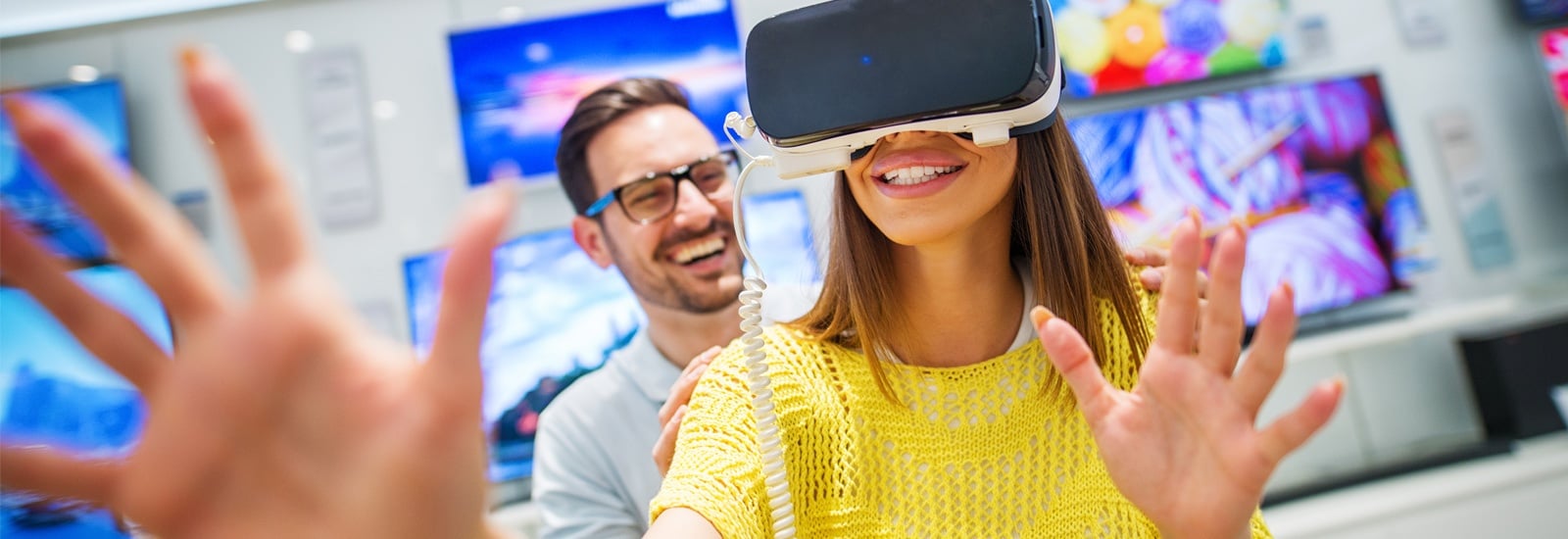Technological evolution and changing consumer behavior are forcing brick-and-mortars to move into uncharted waters. ‘Business as usual’ is being replaced by emerging technologies and growing expectations for in-store experiences and personalization. This means that brick-and-mortars need to evolve if they want to stay in business.
Last week we talked about the physical challenges retailers are facing and the changes in consumer behaviour. Today, we’re following up by looking at the techs and trends we expect to shape the future of retail in the years to come.
Predicting 2018 and beyond
ZDNet recently published a special feature, Data, AI, IoT: The Future of Retail containing a study of 135 predictions for the retail sector (in general) in 2018 and beyond. The study identifies 13 emergent themes and even though there are more than four months left of 2018, we’ve already become acquainted with several of them.

Let’s take a look at some of the dominating themes that can help stores overcome the physical challenges and new consumer expectations.
Emerging Tech
Not surprisingly, emerging tech takes the first place in ZDNet’s study. Augmented Reality is expected to boom in the coming years and of course, this will also affect the retail sector.
At MapsPeople, we also expect AR to make substantial waves in retail stores. AR technology improves the in-store experience, which is one of the areas brick-and-mortars really needs to concentrate on if they want to compete with online shopping. Sixty-one percent of shoppers prefer to shop at stores that offer AR technology over those that don’t and 40% of shoppers even say they would be willing to pay more for a product if they could experience it through Augmented Reality. Furthermore, 71% of shoppers say that they would shop at a retailer more often if they offered Augmented Reality (source: Retail Perception).
AR marketing is also the perfect tool to create a personalized experience, and as the chart above shows, personalization is also an important theme for the future of retail. Think of AR mirrors at sporting good stores that let you try on your personalized sneakers before ordering them so you’re sure the colors are just right for you. Or point your phone’s camera at the pasta on the supermarket shelf and get a complete recipe and shopping list for a dish that matches your preferences. Supermarkets can even use this opportunity to give you personalized offers on the things you like the most based on your previous purchases and the items you scan.
Another innovation that was widely predicted to go mainstream this year is voice-driven shopping. While Ayden believes in voice-driven shopping because of the partnership Google has made with both Target and Walmart, CPC Strategy believes in the tech mainly because of the popularity of Amazon's Echo Dot and Google's Home devices.
Finally, Samsung expects more retailers to use beacons that can help customers locate the things on their shopping lists faster. Of course, we’re excited about this trend at MapsPeople as our flagship solution, MapsIndoors, uses beacons to help customers navigate hypermarkets, shopping malls, and department stores.
Experience Is Everything
One of the most dominating themes is the in-store experience. According to Deloitte, experience is more important than ever and retailers need to reimagine stores if they want them to remain relevant places that customers keep wanting to come back to. They “need to be more than just places to transact”.
At Apple, the largest stores are no longer just stores but ‘town squares’. The IT giant wants to turn flagships stores into gathering places where ailes become avenues and trees provide shade from fluorescent lamps. Here, customers can attend coding classes or dive into music or photography lesson. 
Meanwhile, Nordstrom is giving ‘retailment’ a try with the merchandise-less Nordstrom Local concept store in Los Angeles. The store is just a fraction of the size of the typical Nordstrom full-service department store and, it doesn’t stock clothes. Instead, it has spa services, a tailor, and personal stylists, not to mention a bar that serves wine, beer, cold-pressed juice, and handcrafted espressos.
This new type of store is based on the idea of retailment - retail marketing through entertainment and experiences - and it seems to be working. In the second quarter of last year, Nordstrom same-store sales were up 1.7% from 2016 despite analysts anticipating a 0.4% drop.
The Evolution of Brick-and-mortars
In continuation of town squares and retailment, let’s take a look a the evolution of brick-and-mortars.
Click and collect has been around for years but we strongly believe that this concept will develop further and eventually dominate retail stores. According to Retail Dive, The Great Recession in 2008 split consumers into two groups: the value-orientated and the convenience-oriented. Although we’re not sure about this segmentation, it’s clear that today’s consumer values convenience. This is underlined by the study led by researchers from University of British Columbia and Harvard Business School suggesting that “using money to buy free time (...) is linked to greater life satisfaction”.
Retailers are increasingly starting to adapt to this new consumer demand and if the predictions hold true, we’ll soon be witnessing an evolution of brick-and-mortars. As digital retail experts, CPC Strategy, say “it’s very likely that brick-and-mortars will either downsize or shift role in the future. Some brands have adapted by turning their store into more of a showroom (think: Best Buy) and others (Walmart, Target) are working on integrating online and offline so that customers can buy online and pick up in-store (...)”
We’ll be following these predictions closely over the coming months and reporting on any significant developments. Until then you're more than welcome to check out our retail solution and see what we can offer brick-and-mortars.
August 10, 2018




.png)